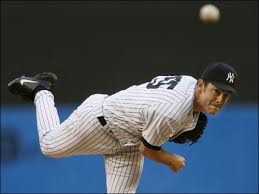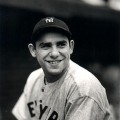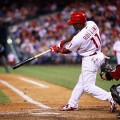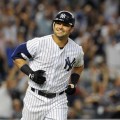By Steven Simineri
When Mike Mussina called it a career following his first 20-win campaign in 2008, longtime Yankees captain Derek Jeter, who doesn’t just throw around compliments, said that all of Mussina’s accomplishments “represent a Hall of Fame career.”
While Jeter will stroll into Cooperstown in 2020, his former teammate has had a difficult time on the ballot even though making Mussina’s case for the Hall of Fame is easy to support using either traditional statistics or modern analytics.
So where does Mussina’s Hall of Fame case suffer? He pitched in an era that boasted several elite pitchers — Roger Clemens, Randy Johnson, Greg Maddux, Pedro Martinez and John Smoltz to name a few. Mussina also lacks what Bill James called black ink — league-leading totals in important categories like earned run average or wins.
He led the league in wins once (1995). But he never led the AL in either strikeouts or ERA, even though he ranked in the league’s top five six times in the former and seven times in the latter.
The brainy right-hander never won a Cy Young Award, though he received votes in eight separate seasons across a 10-year span, at one point finishing in the top five four times in five years. Despite snagging 7 Gold gloves and earning All-Star honors five times, at no point in his career was Mussina considered the league’s best pitcher and he sometimes didn’t quite “feel” like a Hall of Famer.
But he was no compiler. As much as anything, perhaps, Moose was consistent.
A native of Williamsport, PA, Mussina won at least 18 games six times and starting with his second season, he never made fewer than 24 starts. Besides his rookie year, he had just one losing record in a season and Mussina was the first American League pitcher to win 10 or more games in 17 consecutive seasons.
In his time as a starter, only Maddux, Johnson and Tom Glavine won more games than he did. It is the same with innings pitched: Across the span of Mussina’s career, only those three guys — Maddux, Glavine, Johnson — pitched more innings than he did.
As for traditional stats, Mussina has a solid Cooperstown case, going 270-153 with a .638 winning percentage in 18 seasons with the Orioles and Yankees. He ranks 33rd all-time in victories, tied with Hall of Famer Burleigh Grimes and above Jim Palmer (268), Bob Feller (266), Bob Gibson (251) and 31 other enshrined starting pitchers. He may have fell 30 wins shy of 300, but that’s something not happening again for a long, long time.
The move toward league-wide five-man rotations combined with the more recent increased role of bullpens, gives starting pitchers fewer cracks at wins. That’s why voters shouldn’t use old standards when evaluating pitchers for the Hall of Fame.
Nonetheless, pitchers with 270 wins tend to end up in Cooperstown. Mussina’s 270 wins is the fourth-most of any non-Hall of Fame pitcher. One of those pitchers is Clemens. The other two are guys are journeymen; Tommy John and Jim Kaat. Heck, Mussina could have stayed around and chased 300 wins, but he retired at the height of his powers.
He was 39 year old during his last year in New York, and he went 20-9 with a 3.37 ERA in 200.1 innings, becoming the oldest starter to reach the 20-win plateau for the first time. But the low-key and intelligent Mussina left behind millions of dollars, and a bunch of counting stats that might have pushed up his Hall of Fame chances.
Mussina’s 2,813 strikeouts rank 19th all-time and his rate of 7.1 strikeouts per nine is tenth among pitchers with at least 3,000 innings. Moreover, his 3.58 strikeout-to-walk ratio is second only to Schilling among pitchers with at least 3,000 innings since 1900. Mussina’s 3.68 ERA would be the second highest for any pitcher in the Hall, but it can be explained by pitching in the American League East, and in the middle of the steroids era.
His career ERA+ of 123 (a measure of park-neutral ERA relative to league, with 100 being average) is tied for 23rd all-time.
Even by advanced metrics, Mussina’s 83.0 lifetime Wins Above Replacement is 23rd-best of all time, ahead 41 of the 62 enshrined starting pitchers. Mussina’s accumulated WAR ranks 14th best among post-World War II pitchers, and second among pitchers who aren’t enshrined, trailing only Clemens.
Out of all pitchers who have debuted since 1975, only Clemens, Maddux, Martinez and Johnson have accumulated more WAR.
Adam Darowski of hallofstats.com rates Mussina 20th best all-time among pitchers with a 162 Hall Rating. Meanwhile, Jay Jaffe of Sports Illustrated ranks Mussina 28th among all hurlers with 63.8 JAWS. His total JAWS is 1.7 points above the Hall average, a hair below Curt Schilling (64.5) and two above Tom Glavine (62.9). His score beats those of 38 enshrined starters.
On a ballot overstuffed with flashier candidates, the low-key and intelligent Mussina was at a mere 20.3 percent in his first year up to induction. In the past 50 years, just one pitcher who’s debuted with a lower percentage of the vote than Mussina, Bert Blyleven, has won enshrinement through the writers. Mussina didn’t fare much better in 2015 at 24.6 percent.
However, he was the ballot’s biggest gainer in 2016, adding 18.4% to his total to reach 43.0%.
As of Tuesday evening, according to Ryan Thibodaux’s Hall of Fame tracker, Musssina is polling at a solid 61.6 percent. He has experienced a net gain of 19 votes from known ballots last year, a leap exceeded only by Clemens (22), Barry Bonds (21), Edgar Martinez (29) and Tim Raines (23).
No matter what stats you go by, Mussina is the best pitcher not in the Hall of Fame who doesn’t have any PED issues, and it seems like the Baseball Writers’ Association of America are finally starting to catch on.
Comment: Steviebklyn414@aol.com

















Follow Us